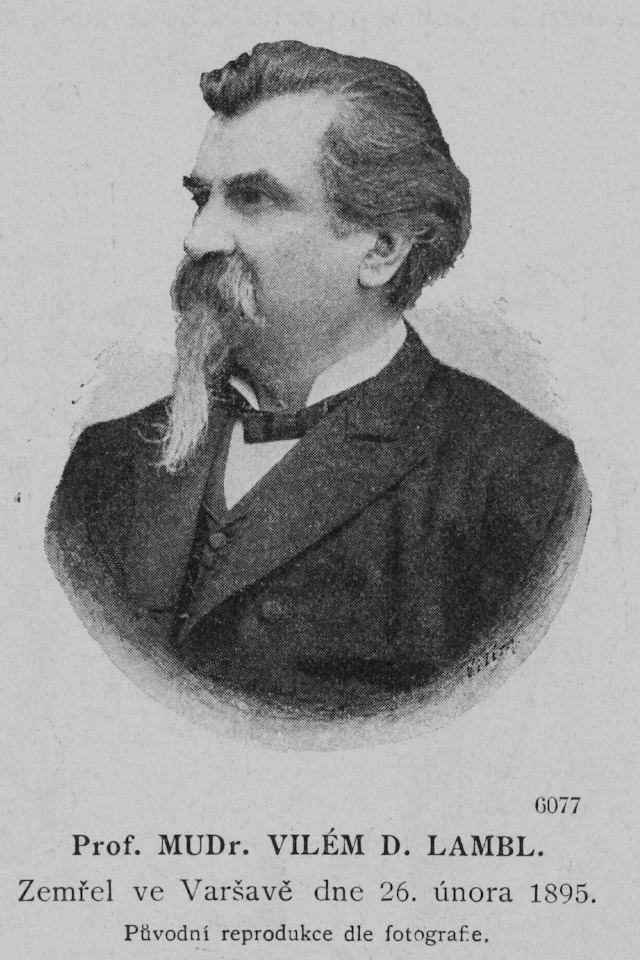Name Vilem Lambl | Role Physician | |
 | ||
Died February 12, 1895, Warsaw, Poland | ||
Vilém Dušan Lambl (5 December 1824, Letiny – 12 February 1895) was a Czech physician from Letina, Kreis Pilsen, Bohemia.
Lambl had a keen interest in the field of linguistics, particularly Slavic languages. After earning his degree in medicine from the University of Prague, he traveled extensively in Croatia, Serbia, Dalmatia, and Montenegro, conducting research of southern Slavic languages and culture. Following his return to Prague, he worked at Josef von Löschner's children's hospital until 1860, when he accepted a position at Kharkiv University.
He is remembered for his description of an intestinal protozoan parasite that was initially discovered by Anton van Leeuwenhoek (1632–1723), and is a cause of gastroenteritis. Lambl called the protozoan Cercomonas intestinalis. In 1888 the name was changed to Lamblia intestinalis by zoologist Raphael Anatole Émile Blanchard (1819–1900). In 1915 the species was renamed to Giardia lamblia by American zoologist Charles Wardell Stiles (1867–1941) in honor of Lambl and French biologist Alfred Mathieu Giard (1846–1908). Today the illness caused by the parasite is called either "lambliasis" or "giardiasis".
With Löschner, he published "Aus dem Franz Josef-Kinder-Spitale in Prag", Part one: "Beobachtungen und Studien aus dem Gebiete der pathologischen Anatomie und Histologie" (1860), ("From the Franz-Josefs-Kinder-Spital in Prague, Observations and studies from the fields of pathological anatomy and histology"). Lambl's "excrescence"s are still important today as an anatomic feature essential to physiologic valvular coaptation; especially in the Aortic Valve.
